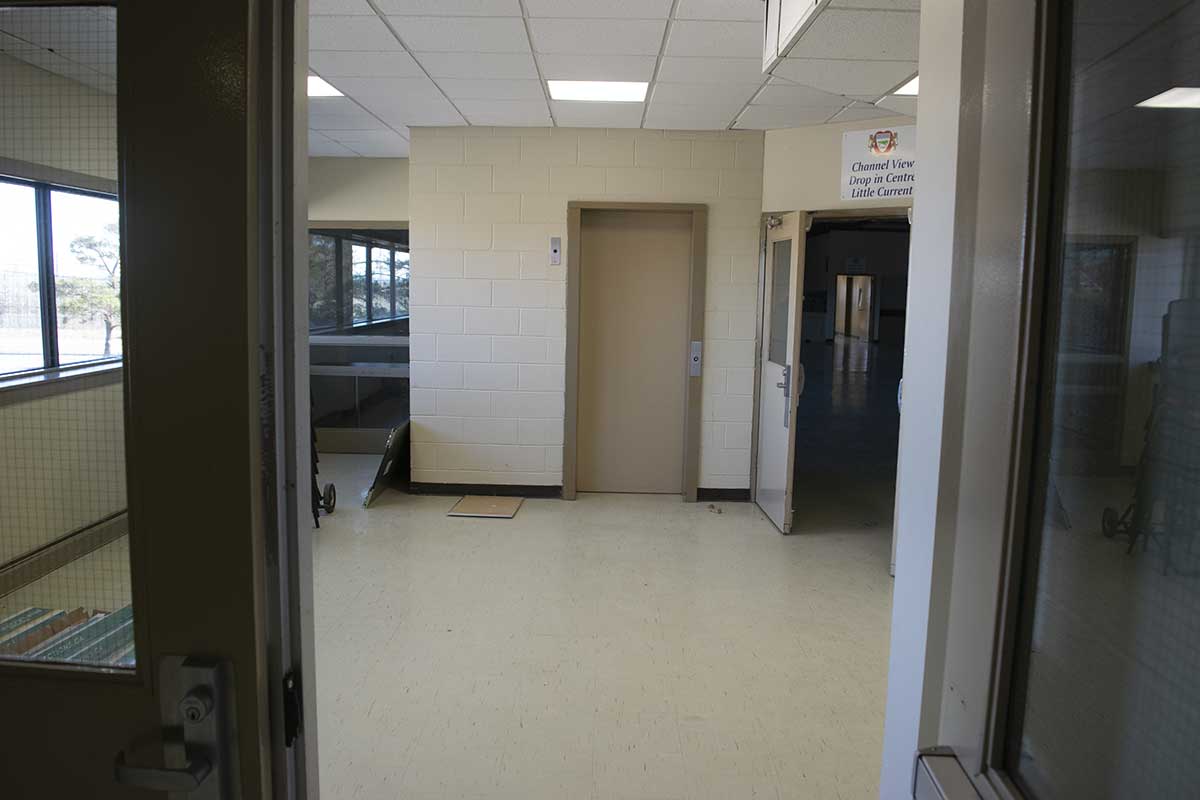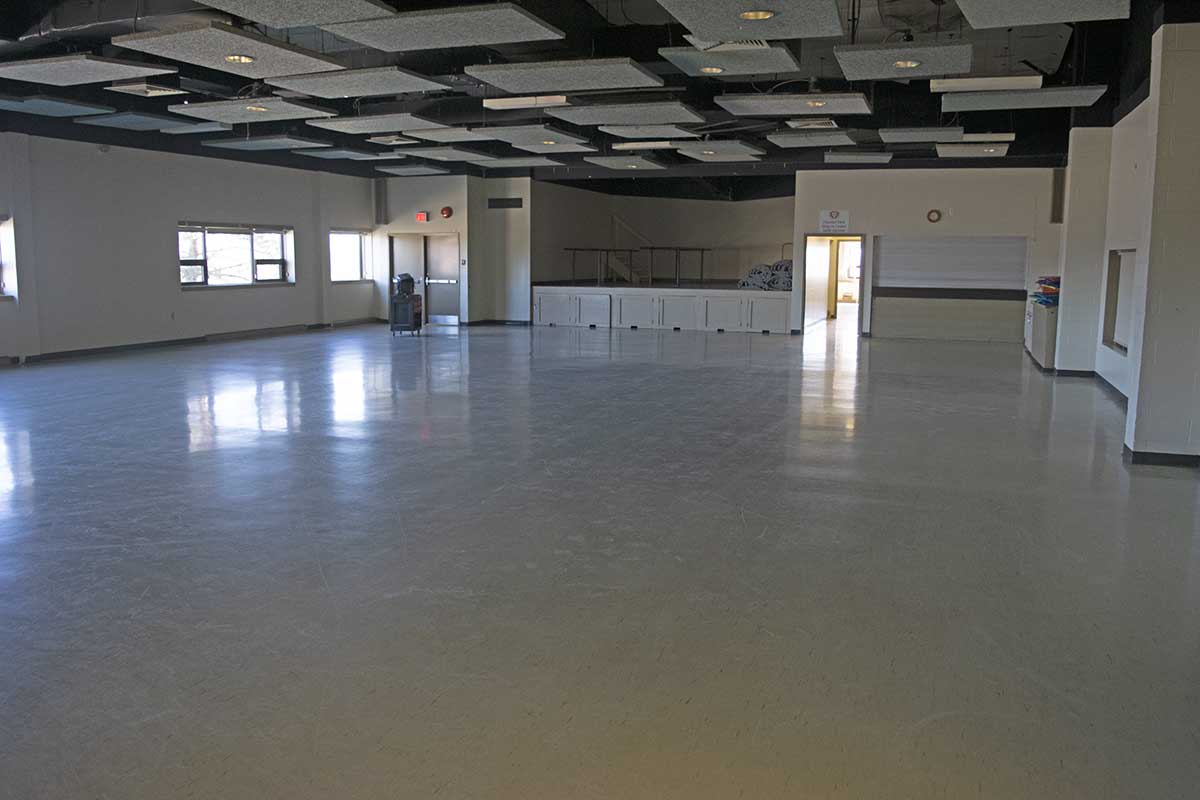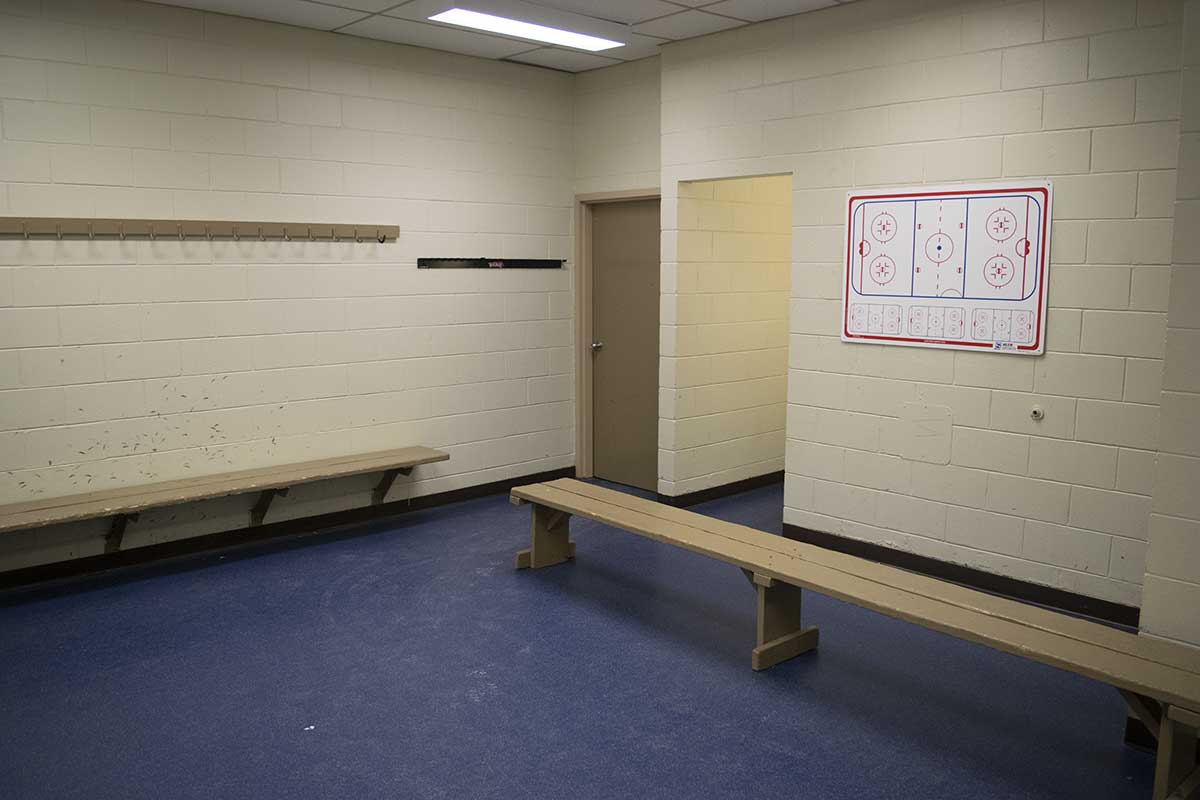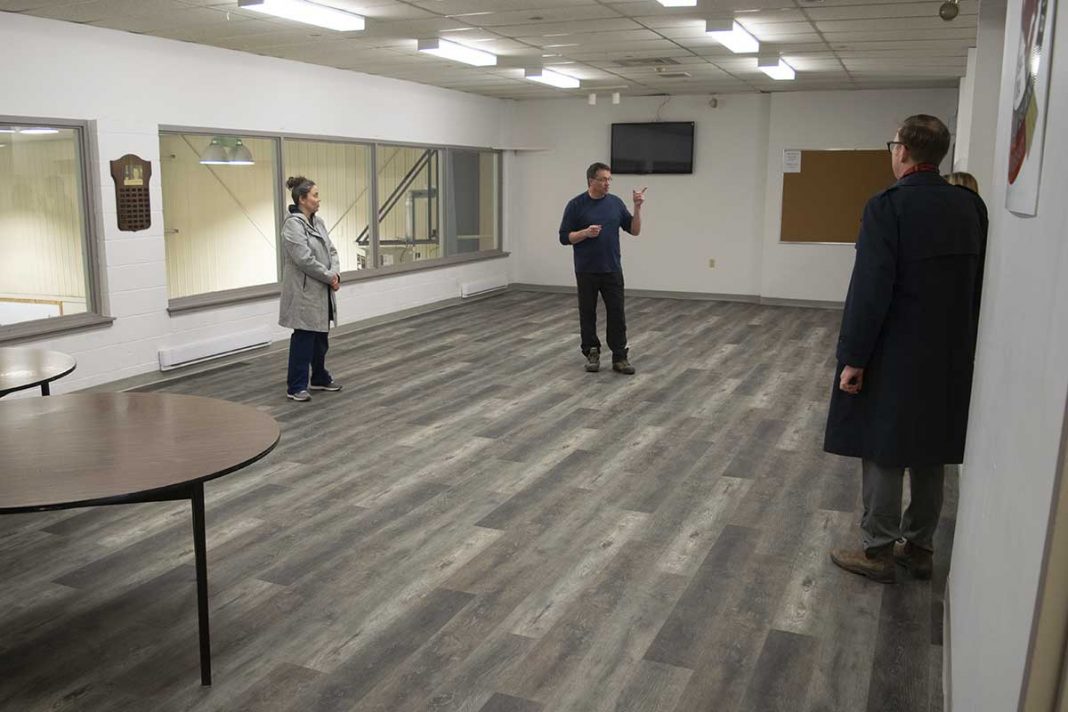Sub-acute care centre will accommodate up to 30 patients
LITTLE CURRENT – Manitoulin Health Centre (MHC) has partnered with the Northeast Town to create a standalone sub-acute care centre (SCC) for COVID-19 patients at the Little Current-Howland Recreation Centre, designed to be a stage of treatment between intensive hospital care and less-involved home and community care.
“A number of minor miracles have taken place to allow this all to click into place,” said Dr. Mike Bedard, who serves as the president of the medical staff at MHC and has offered to be the lead physician of the SCC. “I reiterate: this is the best place in the world to ride this out.”
The designated Manitoulin Island COVID-19 hospital will be MHC’s Little Current site. In-hospital care will be provided to patients with severe cases of the virus and that department will be overseen by Dr. Roy Jeffery.
Up the road, the town’s arena and curling club is being transformed into the SCC, with that facility legally becoming a branch of MHC until it is no longer needed. Dr. Bedard has offered to oversee this facility which will support up to 30 patients.
“This is intended to be front-line support to the Manitoulin Health Centre’s main front line of action,” said Dr. Bedard.
Services available at the SCC will include the delivery of 100 percent oxygen, medical supports such as intravenous care, administration of a patient’s regular medications, nutrition and some form of mental health support. Its main purpose is to give patients more time for their immune systems to fight off the virus.
“The goal, of course, is to make sure that we keep as many beds available at the hospital for those who are critically ill and who will need that expertise,” said MHC president and CEO Lynn Foster.
The hospital site and arena were chosen in conjunction because they are physically close. This will enable a two-way patient flow between the locations—if a patient experiences severe symptoms at the SCC, Dr. Bedard will send them for more intensive care at the main hospital; if a hospital patient stabilizes and is no longer in critical condition, they will be sent to the SCC.
The Little Current arena is also fully heated and there are two separate ventilation systems within which will reduce the possibility of airborne contamination.
Admitting will take place in the upstairs portion of the arena, just outside of the large conference hall. That hall will be the main ward and a series of simple cubicles (built similarly to the internal walls at the Mindemoya COVID-19 test centre) will offer some privacy. Licenced contractor John Deforge has volunteered a crew to construct those cubicles.

From the stage at the far end of the room, physicians and nurses will be able to look out over the whole ward and see if anyone is in need of assistance.
Next to the stage, also at the rear of the ward will be a designated “COVID-positive” staff area and washroom—this means that the virus may exist within the area as opposed to a “COVID-negative” space that is separate from the patients.
Discussions were ongoing at the time of the tour about protocols for the space between the ward and the “clean” area, including the possibility of a three-stage “airlock” with different stages for employees to take off their personal protective equipment and decontaminate.

All patients will receive food at the SCC and M’Chigeeng Freshmart baker Pam Roy has offered her help, if needed, in the kitchen. The arena has two separate kitchen facilities, one on the second floor and one on the ground level, which will help to keep the COVID-negative and COVID-positive areas of the building separate.
Patient washrooms are down the upstairs hallway past the Lions’ Den and no patient showers are available. Downstairs, the curling club ice surface will be used for storage and as a morgue.
The dressing rooms near the main ice rink will be converted into sleeping quarters for health care workers if they should need to stay on-site overnight. Dr. Bedard expressed his interest in staying there if demand at the SCC spikes.

When patients are stabilized enough in the SCC, they will then be stepped down to either home-based care or community-organized aid stations, if individual communities choose to set up these facilities. The lead physician at the SCC will also connect with those independent community-based recovery centres to offer information and advice and liaison with MHC.
Oxygen delivery equipment is in short supply nationwide due to the pandemic but Manitoulin is well-positioned to handle the increased demand. The SCC is home to 12 large oxygen tanks that were on hand before the shortages.
“Supply of oxygen is not the problem; cylinders and regulators are the problem. But we’ve overcome that,” said Dr. Bedard. “Thankfully we were ahead of it.”
Oxygen flows through regulators between the tank and the patient. These are devices that take the massive amounts of stored pressure and reduce it to an adjustable amount that is safe for patient use.
Most regulators feed a single user. However, MHC has obtained triple-output regulators, meaning all 30 patients in the SCC can be oxygenated using only 10 tanks (theoretically leaving the remaining two to be refilled and ready to replace tanks as they run out).
Retired paramedic Bill Cranston recently devised a novel solution for patient oxygen delivery, which is discussed in further detail in the story on Page 1 of this newspaper, ‘Island paramedic re-engineers snorkel masks…’




